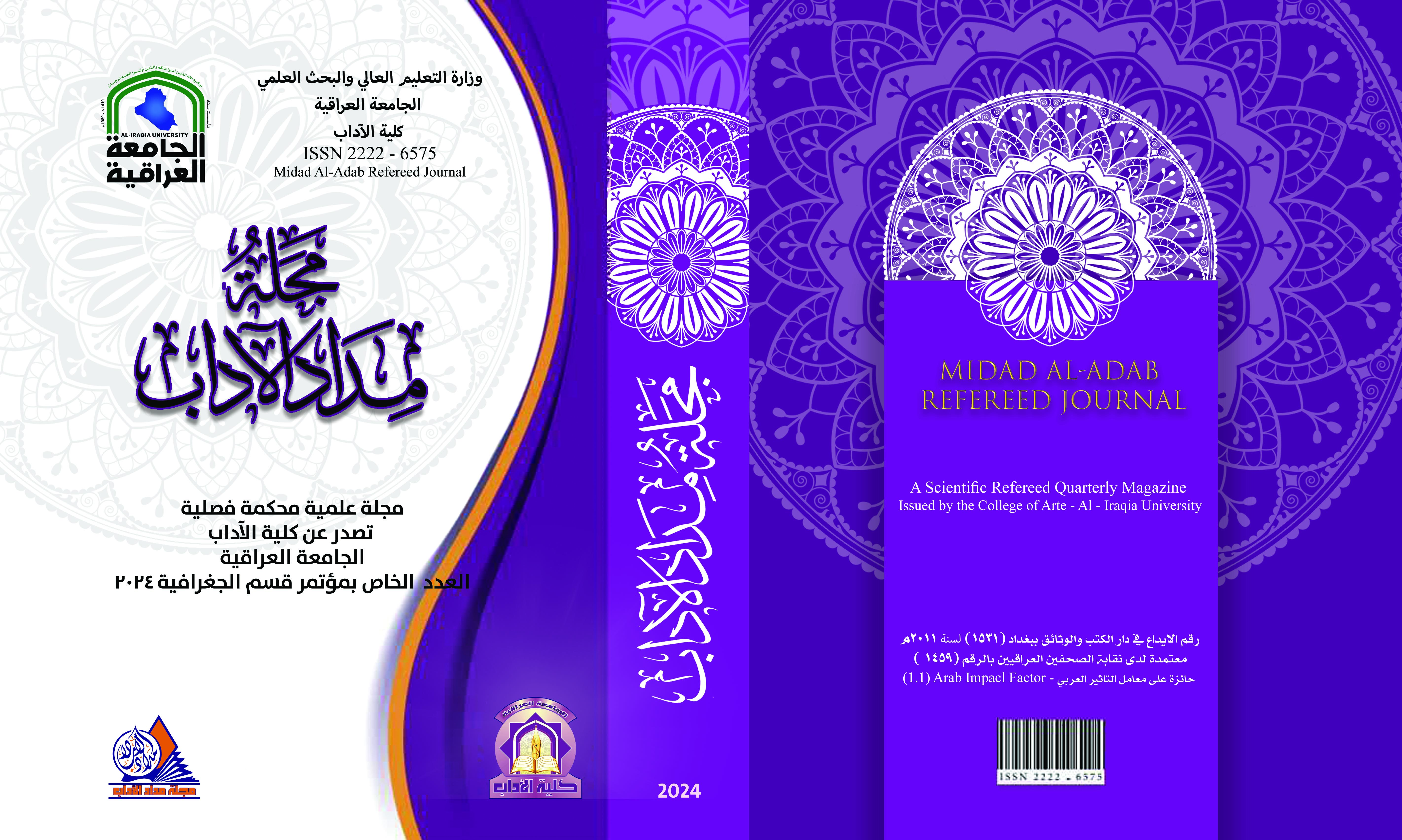The hydrological characteristics of the Wadi Al-Mahari Basin using geographical techniques
DOI:
https://doi.org/10.58564/ma.v14iالعدد%20الخاص%20بمؤتمر%20قسم%20الجغرافية.1495Keywords:
Keywords: valley, techniques, flow volume, water harvesting, groundwater.Abstract
The study area is represented by the Wadi Al-Mahari basin, which is one of the basins located in the southern desert of Iraq within the governorates of Najaf and Diwaniyah. It is located between two lines of longitude (= 21 - 14 43 and = 10 - 39 44 east), and two latitudes = 47 - 33 30 and = 44 - 30 31 north. As for the geographical boundaries, the basin’s upper sources descend near the Iraqi-Saudi border at a distance of 27 km, heading from the southwest towards the northeast, which empties into the right side of the Euphrates River at Shatt Al-Khasf. Its northern border is represented by the Wadi Al-Khasf basin. Mazal, while it is bordered to the northwest by Wadi Hasab, and to the south and southwest it is bordered by the valleys of Al-Rubaish, Al-Awja, and Al-Hawaimi. The area of the study area is (4136.8 km2).
It aims to study and analyze the hydrological data of the drainage basins and their impact on the occurrence of torrent flow, as well as the possibility of investing in the natural resources existing within the region.
(GIS) technology was used as an applied model to create a digital database for the hydrological characteristics of the Wadi al-Mahari Basin and its secondary basins, based on (DEM) and (Arc GIS 10.8) program. A set of results were reached that express hydrological implications, and (Global Mapper) program, for the purpose of Importing data and creating three-dimensional and satellite visual shapes of the Moon (Land Sat 8) for the year 2022, with a resolution of (30*30) m, as well as a set of topographical and geological maps at different scales.
Hydrologically, the Snyder Model was used to estimate the volume of flow, which depends on a set of equations, the most important of which are concentration time and response time (deceleration time); The total flow volume of the Mahari Basin reached (1546.44) thousand m3/s, while the strength of the torrent reached (109.99) million m3/s. These quantities of water can be applied to the water harvesting technique in the basin because of its hydrogeomorphological implications. As for groundwater in The Mahari Basin, the largest part of which is located within the regions of medium and high abundance.
Downloads
Published
Issue
Section
License

This work is licensed under a Creative Commons Attribution-NonCommercial-NoDerivatives 4.0 International License.








